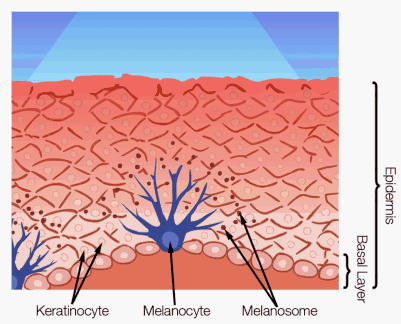The Advanced Diagnoses Device:Three Dimensional Skin CT
 Skin CT examination is also called confocal laser scanning microscopy, the shorted form is CLSM. What is three dimensional skin CT? Skin CT makes use of the new generation low energy semiconductor penetrating the skin. Scan the epidermis and dermis superficial layer of skin, because of cells have the different reflection coefficient to laser, observe any pathological changes of the skin, to assist the clinical diagnoses.
Skin CT examination is also called confocal laser scanning microscopy, the shorted form is CLSM. What is three dimensional skin CT? Skin CT makes use of the new generation low energy semiconductor penetrating the skin. Scan the epidermis and dermis superficial layer of skin, because of cells have the different reflection coefficient to laser, observe any pathological changes of the skin, to assist the clinical diagnoses.
It not only can diagnoses the pathological changes, but also can see the distribution of the pigment underlying skin. And choose the most fit laser wave length to treat the freckles, pigmented nevus, brown green spots, chloasma, vitiligo etc. and meet a better treatment effects.
Why do we need to use the three dimension skin CT for the vitiligo’s examination?
1) According to the difference of gender and the age and the skin type characteristic, improve the accuracy of the detection conclusion by using this test.
2) This examination provides the clear qualitative analysis and the specific treatment as well as recovery advices to the vitiligo patients. This system makes the vitiligo pathological test more convenient and fast, the precise results will come out within five minutes.
3) We use the mirror medical imaging system, circulation facial photography techniques and the minitype of magnifying glass instruments to analyze the dipigmentaion of the melancytes, and the skin lesion distribution, the condition of melancytes, UV reflect light spot, diagnose the pathogenesis of the vitiligo and the condition of the vitiligo.
4) After diagnosing the pathogenesis of the vitiligo we have to conduct a scientific and effective treatment. The Skin CT test can follow up the patient’s treatment progress accurately and the concrete improvement of disease situation. It can obviously detect the growth of the melancytes, and it is convenient for doctor to decide the treatment effect, and further fulfill the treatment and the recovery plan. This is unreachable in the previous treatment techniques.



Leave a Comment